| |
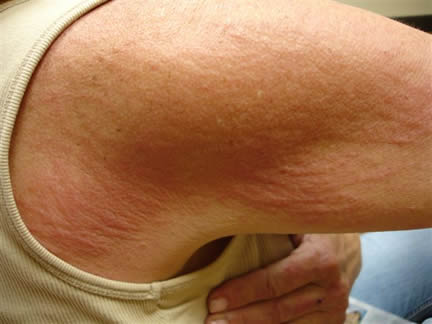
Image 1

Image 2
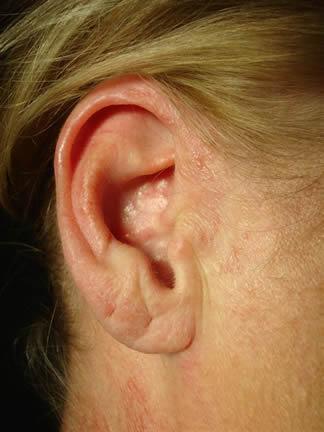
Image 3
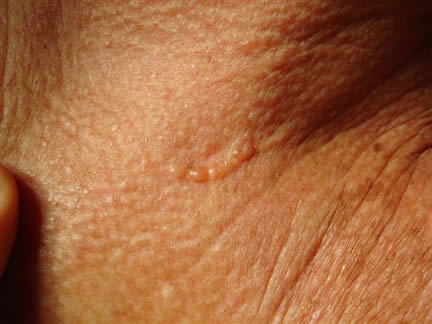
Image 4
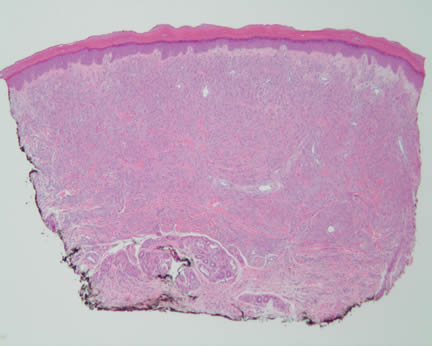 Image 5-Low power magnification showing diffuse replacement of the dermis by a cellular infiltrate, separated from the epidermis by a Grenz zone. Image 5-Low power magnification showing diffuse replacement of the dermis by a cellular infiltrate, separated from the epidermis by a Grenz zone.
 Image 2 Image 2
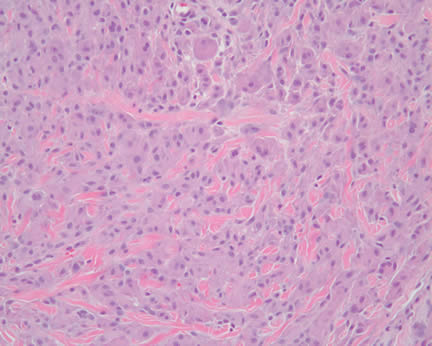 Image 3-Higher power magnificatioin exhibiting histiocytic appearing cells with occasional giant cells. Image 3-Higher power magnificatioin exhibiting histiocytic appearing cells with occasional giant cells.
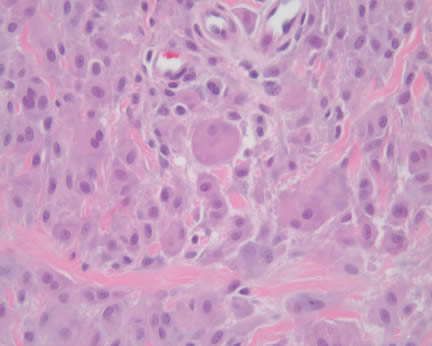 Image 4 Image 4

Image 5-Diffuse nuclear positivity for p53.
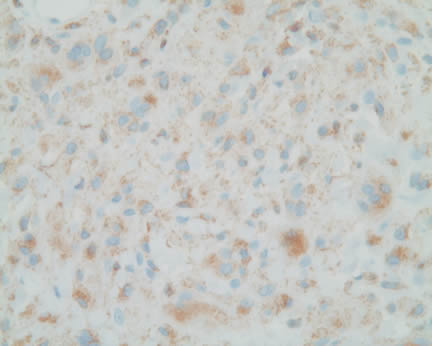 Image 6-Diffuse immunopositivity for CD68 Image 6-Diffuse immunopositivity for CD68
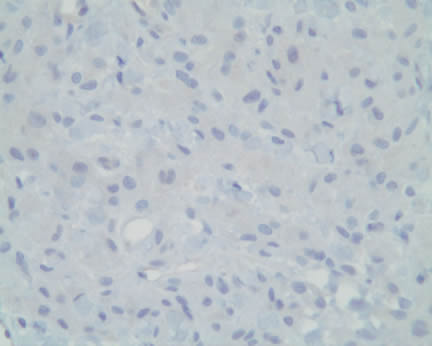
Image 7-Immunohistochemical stains for CD1a, Cytokeratin, S100, and smooth muscle actin were negative. CD45 revealed focal positivity.
|
|
 |
|
Case Study
This is a 56 year old woman who presents with an acute onset of multiple erythematous papules occurring on the proximal extremities, trunk, head, and neck.
Diagnosis:
Multicentric reticulohistiocytosis
This is an extremely rare and fascinating case. The clinical-pathologic presentation presents a unique opportunity to study a classic, non-Langerhans' cell histiocytosis. The typical patient is a middle aged adult, usually female, presenting with multiple yellow-brown papules on the face and distal upper extremities. The course is variable but spontaneous regression after 5-10 years is typical. Some patients develop a debilitating and destructive arthropathy with occasional infiltration by the histiocytes into visceral organs. Serum lipid profiles are typically normal.
In up to 30% of cases, a malignancy may develop. Our case is notable for several points. First, the rarity of the disease warrants a review of the typical presentation. Second, the diffuse p53 positivity within the histiocytic cells has never been reported and raises speculation whether there is prognostic significance, similar to the sinister prognostic significance of p53 positive cells occurring in Langherhans' cell histiocytosis. Finally, after the diagnosis was rendered, additional clinical information was obtained. The patient was examined by her primary care physician where a diagnosis of urinary bladder carcinoma, metastatic to the pelvis and neck soft tissues was made. The patient claimed she had no prior health problems nor symptoms. To our knowledge, the possible paraneoplastic association with urinary bladder cancer has never been reported.
We are currently collecting additional cases and examining the immunohistochemical profile to ascertain whether any prognostic information may be gleaned from these additional studies.
Acknowledgements:
We thank Drs. Amy Litchfield and Elizabeth Lener of Ladera Dermatology for the clinical photos and history.
References
The Doctor's Doctor-Histiocytosis
|

